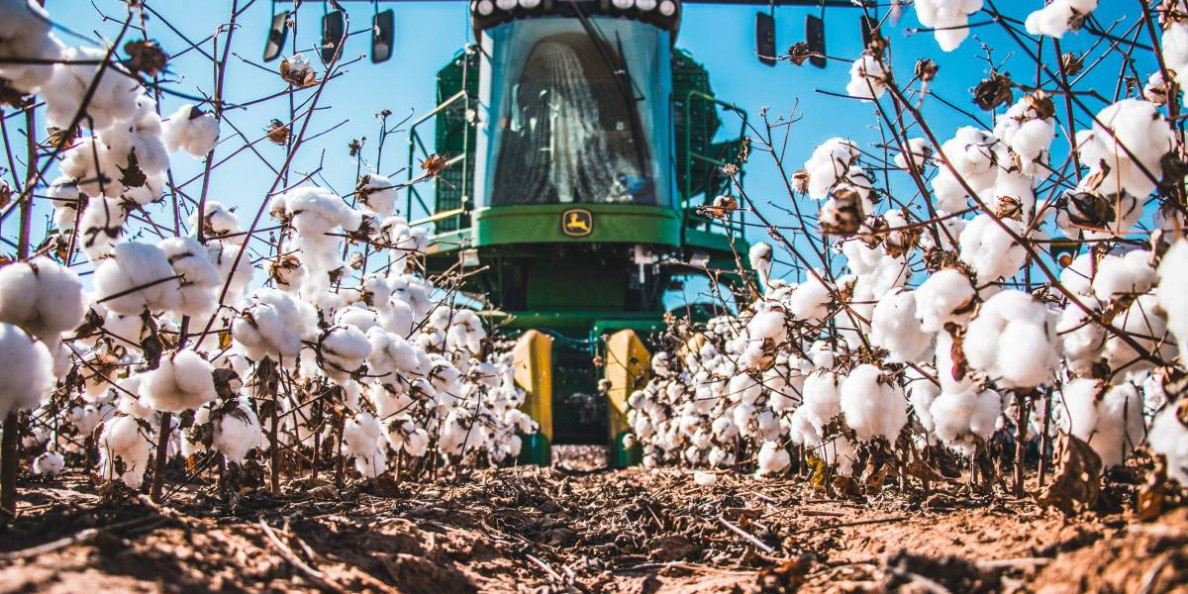World cotton demand continued to recover in 2021. Following the large decline in consumption due to COVID shutdowns and restrictions in 2020, world consumption made a remarkable 17 million bale recovery to reach almost 120.0 million for the 2020 marketing year. USDA currently is projecting world consumption of 123.4 million bales for the 2021 marketing year, which is 3.5 million bales more than last year. If realized, this would be the fourth highest level on record.
World production for 2021 is projected to exceed 120.0 million bales, which is 8.1 million bales more than in 2020 with the largest increases in the United States, Pakistan, Australia, and Brazil. China’s production for 2021 is projected to be 2.8 million bales less than in 2020.
U.S. planted acreage declined by 7.5%, or almost 1.0 million acres, in 2021. Overall, U.S. crop conditions in 2021 were much better than the last few years. In the Southwest, abandoned acres declined from 49.2% in 2020 to 17.0% in 2021.
In October, USDA estimated a U.S. crop of 18.0 million bales – 3.4 million bales higher than in 2020. With projected exports of 15.5 million bales and mill use of 2.5 million bales for 2021, U.S. ending stocks are estimated at 3.2 million bales. However, export shipments have been behind the average pace in the early part of this marketing year due to a late harvest coupled with relatively small carryover from the 2020 crop.
World stocks are projected to decline to 87.1 million bales at the end of the 2021 crop year. Current trading conditions – including low U.S. stocks, a large volume of on-call purchases, and speculative trading – continue to support higher futures prices. Recent prices are at the highest level since 2011.
Continued strength in cotton prices may lead to a rationing of demand, which could include a shift to lower priced man-made fiber. Mills currently need cotton for shipment over the next few months, so demand is strong, and supplies are tighter. Securing enough cotton to maintain production schedules over the next few months is likely a high priority along with any apprehension of shipping issues in the coming months.
As COVID restrictions are relaxing and world economies reopening, the supply chain is experiencing a level of stress unlike any previous time. The impact on cotton is somewhat unique and more acute due to cotton’s lack of fungibility relative to other commodities, cotton’s dependence on containerized export shipments, and cotton’s reliance on Los Angeles/Long Beach ports.
As we look ahead to 2022, the December futures price was trading in the mid-80s to low 90s prior to when this column was submitted in early November. Based on current price ratios of cotton to other competing commodities, higher cotton acreage is likely in 2022.
However, producers will face higher input costs in 2022 along with potential availability problems with some inputs. The supply chains that are critical for inputs have been affected by tariffs/trade disputes, cyberattacks, hurricanes, and drought. Most significantly, the COVID-19 pandemic has affected almost every aspect of the supply chain, from transportation costs to labor availability.
Chemical and fertilizer prices already have increased significantly since this past spring. In the Southeast region, average prices for nitrogen have increased by 75%. With higher inflation expected in 2022, another increase in input prices prior to the 2022 planting season is likely.
Πηγή: Cotton Grower

